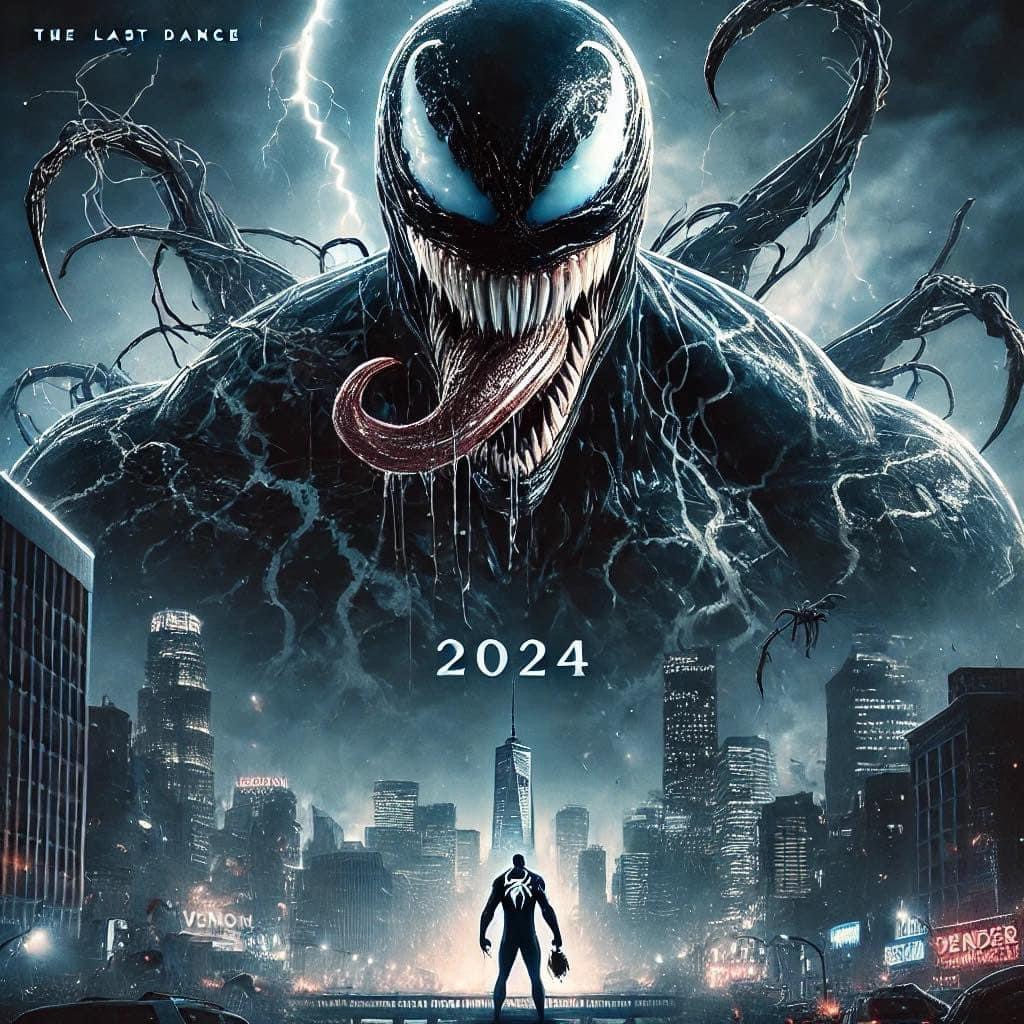VENOM 3: The Last Dance (2024)

“Venom 3: The Last Dance” (2024) marks a climactic chapter in Sony’s Venom saga, pushing the antihero narrative into darker and more personal territory. Directed by Kelly Marcel, who co-wrote the previous films, this entry takes a stylistically distinct turn. Tom Hardy reprises his dual role as Eddie Brock and Venom, bringing an intensity that taps into Eddie’s fractured psyche and the complex bond he shares with the alien symbiote
Suggested videos for you:
The plot follows Eddie as he seeks a fresh start in Europe, hoping to leave his past conflicts and adversaries behind. However, Eddie’s peace is short-lived. In this film, a new antagonist named Orphidian, rumored to be a more ancient and deadly symbiote, makes his debut. Unlike Carnage, Orphidian is not driven solely by chaos but has a more sinister purpose, tapping into Venom’s hidden fears and Eddie’s inner turmoil. This opponent’s intelligence and eerie calm push Eddie and Venom to a breaking point, creating a deeper exploration of symbiosis and control.
One of the film’s highlights is its emphasis on character development. Hardy’s Eddie is worn down, psychologically strained, and battling the symbiote’s constant demands. Unlike previous films where Eddie and Venom often had comedic exchanges, “The Last Dance” dives into a more mature dynamic, showing how their relationship has transformed from reluctant allies to something more symbiotic but deeply flawed. Venom’s character here is less of a wisecracking entity and more a predator struggling to adapt to Eddie’s moral limits. Hardy’s performance is arguably one of his best in the role, conveying exhaustion, desperation, and fierce determination.
The action sequences are distinctively shot, with a visceral and almost horror-like quality. The fight choreography is brutal, less superhero flair and more primal violence, reflecting the predator-versus-predator struggle between Venom and Orphidian. This time, the visual effects team has elevated Venom’s transformations and Orphidian’s abilities, utilizing darker lighting and close-up shots that enhance the atmosphere. The visual style of The Last Dance leans heavily into shadows and grit, creating an almost neo-noir feel that fits the film’s more serious tone.
Critics have praised Marcel’s direction for attempting something bolder and more introspective with the Venom franchise, though the shift in tone has divided audiences. Some feel the movie could benefit from a balance between the humorous aspects seen in earlier installments and this darker approach. The pacing is intense but also layered, with flashbacks and haunting imagery that delve into Eddie’s past, giving viewers a fuller sense of his sacrifices and motivations.
“Venom 3: The Last Dance” isn’t a conventional superhero film, nor does it try to be. It’s a risk that pays off, though not without some uneven moments. Some of the supporting characters feel underdeveloped compared to the depth given to Eddie and Venom, which might be a letdown for those hoping for a well-rounded ensemble. Still, The Last Dance brings closure in a way that respects the journey Eddie and Venom have taken together.
In summary, Venom 3: The Last Dance is a brave, intense film that challenges the traditional antihero narrative. It’s a story of survival and identity, shedding light on the darker corners of Eddie Brock’s psyche while allowing Venom’s character to evolve. Fans of the franchise may find this a satisfying, if somber, conclusion, while newcomers might appreciate its psychological depth and cinematic quality.











